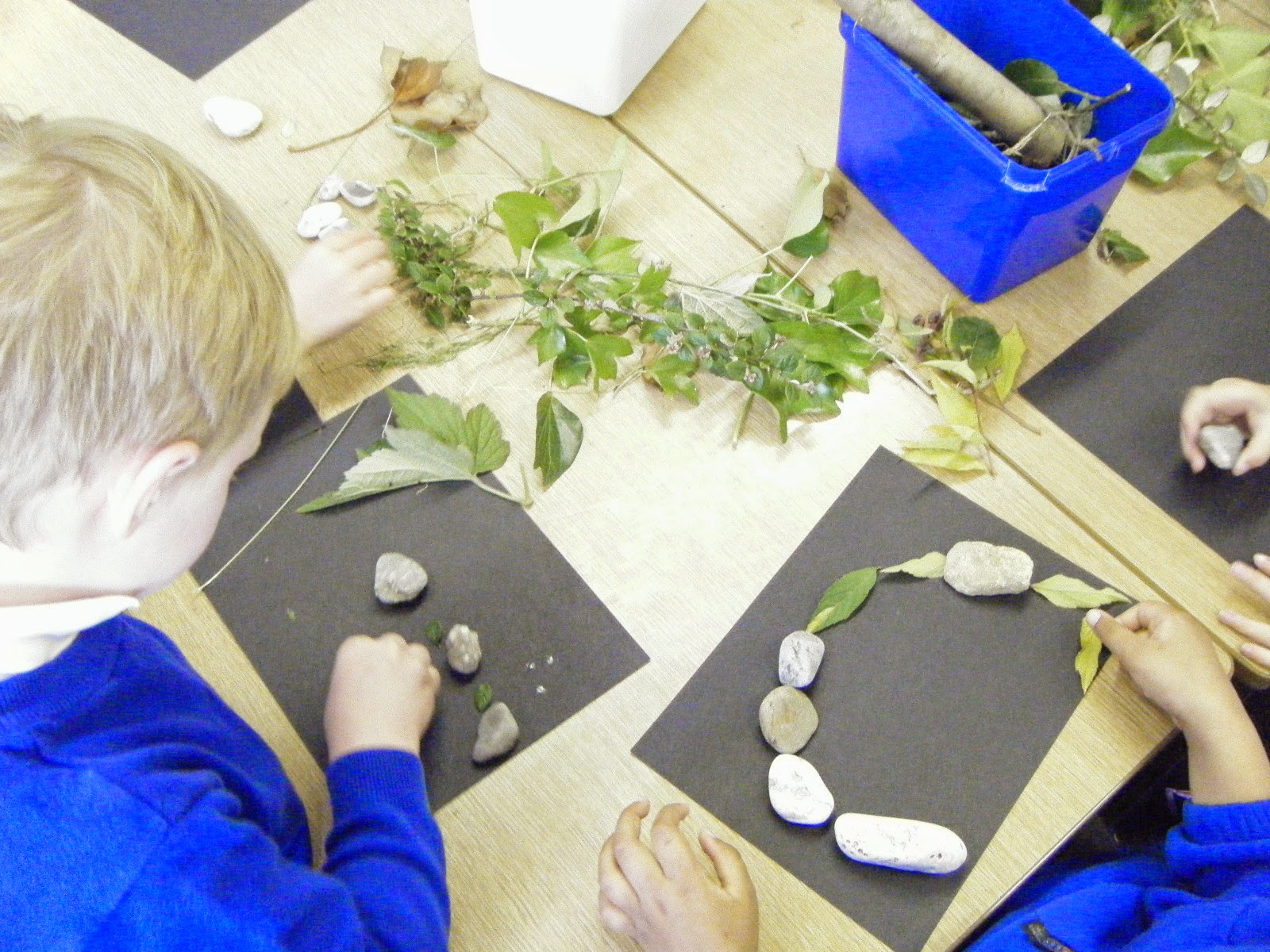Learning objectives
1. I will be able to talk about and name two artists.
2. I will be able to start exploring tone in my observational drawing.
Starter Activity (10 Minutes)-
Introduce to the children the artists Andy Goldsworthy and Richard Long through showing children examples of work created from natural forms.
Ask the children how they think the pieces have been created?
What has the Artist used to create the image?
What do the children think of the composition?
Main Activity - (35 minutes)
Take the children on a nature walk around the school grounds to collects different natural forms e.g. twigs and leaves give the children about 5 minutes.
Once in the classroom ask the children to create their own image concentrating on composition on a background piece of paper (I found that a black background looked best).
Once the children have finished their image photograph the work but make sure the children all have a name label on their work!!
Image (Sherell 2013)
Once the children have finished their work bring the children back to the carpet and demonstrate how to use different artists pencils looking at the different gradients. You can demonstrate this simply by showing children on a piece of paper that the harder you push the darker the line make and how you can create even darker lines with different gradients. Sending the children back to their work know ask the children to create a detailed observational drawing of their piece of work using the different gradients, children can either draw a small section of their work of the whole piece.
This may take longer than 35 minutes however I feel it is important that the children should have time to finish this work as it looks at two different art forms and using them in away that ALL children should be able to achieve the objectives throughout the session.
Image (Sherell 2013)
Plenary 10 minutes-
Ask children to leave their drawings next to their natural form piece of art work. Know allow the children to walk around the class and look at other childrens work encouraging peer assessment. Once the children have had the chance to look at the work lead the children in a discussion asking what they saw in others work as well as what they liked.
During the plenary don't forget to revisit the learning objectives:
1. I will be able to talk about and name two artists.2. I will be able to start exploring tone in my observational drawing.
This lesson looks at exploring different mediums that the children may not have looked at before. Although this session was planned for a key stage 1 class I decided it was important for the children to use proper artists pencils with different gradients I believe that to get good results it is important that children should use the correct resources, this also helps the children to take enjoyment in the work through exploring these new materials.
Image (Sherell 2013)
Reference List
Sherell,
D. (2013) Environmental
art day collection [Photograph].



No comments:
Post a Comment